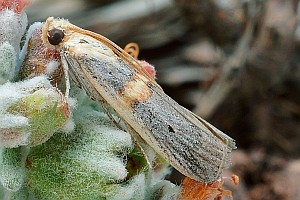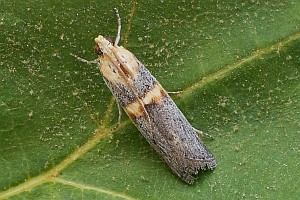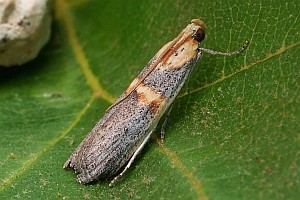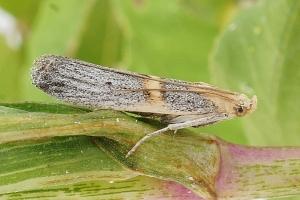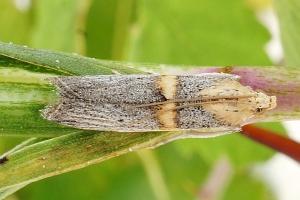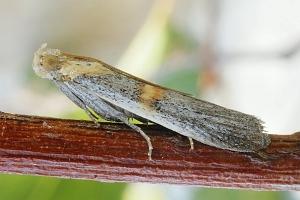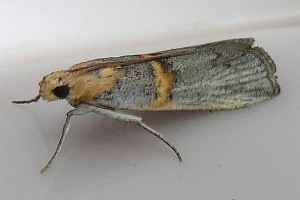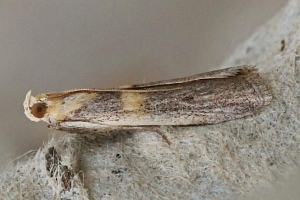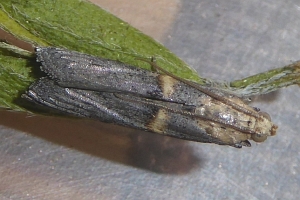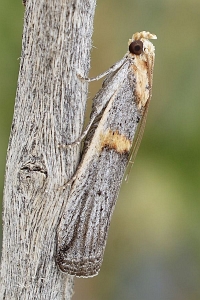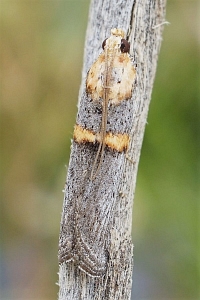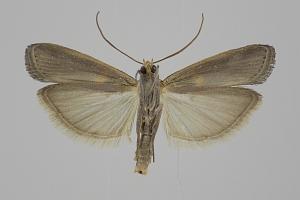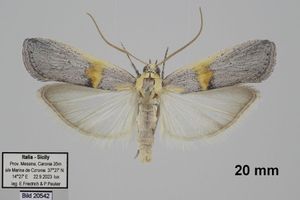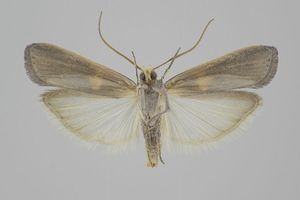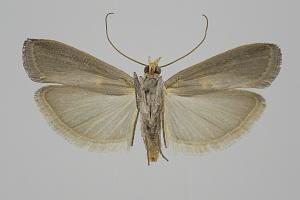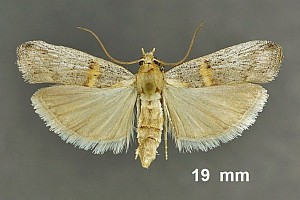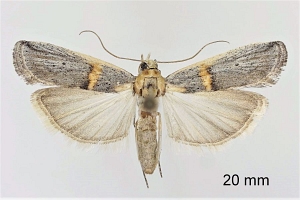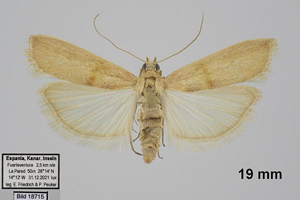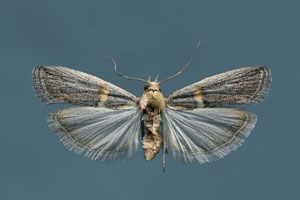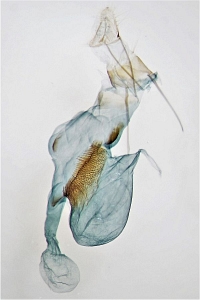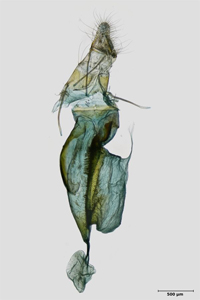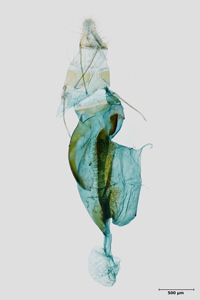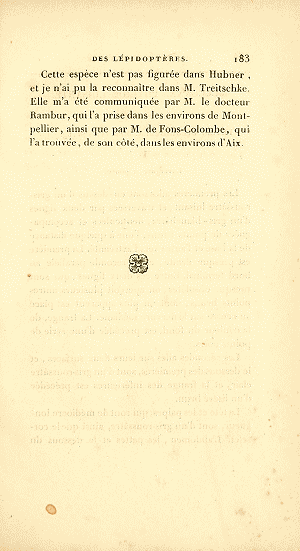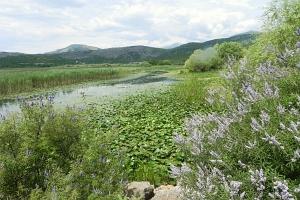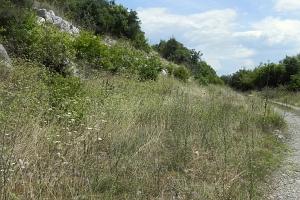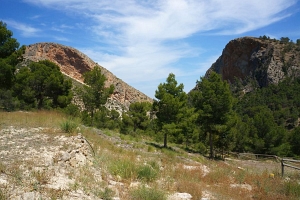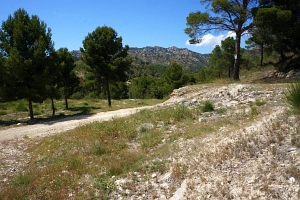

 +32Kontinente:EUASAF
+32Kontinente:EUASAF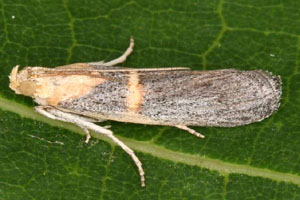
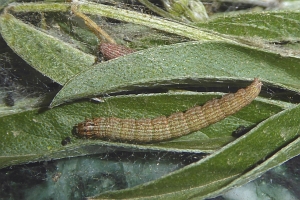
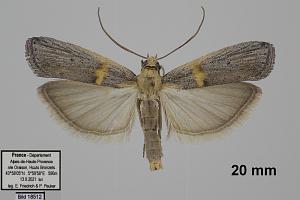
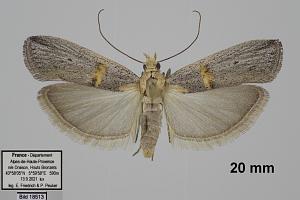
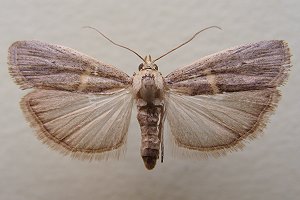
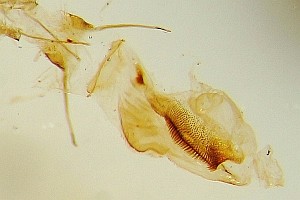
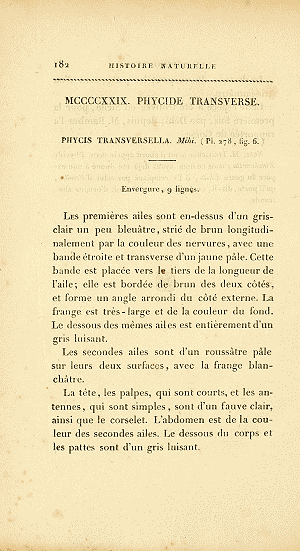
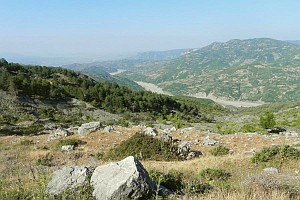
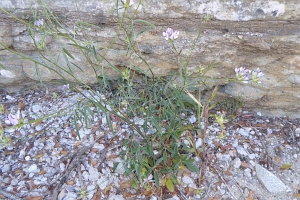
1. Lebendfotos
1.1. Falter
1.2. Raupe
1.3. Puppe
1: Kroatien, Podgora, leg. Raupe 27. April 2017 an Psoralea bituminosa, Puppenfoto 3. Mai 2017 (leg., cult. & det. durch Falterschlupf Bob Heckford & R.J. Beavan, Foto Bob Heckford)
2. Diagnose
2.1. Männchen
2.2. Weibchen
2.3. Geschlecht nicht bestimmt
2.4. Genitalien
2.4.1. Weibchen
2.5. Erstbeschreibung
3. Biologie
3.1. Habitat
3.2. Raupennahrungspflanzen
3.3. Nahrung der Raupe
- [Fabaceae:] Bituminaria bituminosa [= Psoralea bituminosa] (Asphaltklee)
4. Weitere Informationen
4.1. Etymologie (Namenserklärung)
„transversus querüberliegend.“
4.2. Andere Kombinationen
- Phycis transversella Duponchel, 1836 [Originalkombination]
4.3. Synonyme
- Myelois bituminella Millière, 1873
- Oxybia panormitanella Caradja,1928
4.4. Faunistik
Die Art wurde aus Südfrankreich (Umgebung Montpelier und Umgebung Aix-en-Provence) beschrieben. Sie ist im Mittelmeerraum weit verbreitet.
In der Fauna Europaea (zuletzt abgefragt 17. März 2022) wird auch Österreich mit einem Vorkommen belegt. Die Karte von Leraut (2014: 346) bedeckt mindestens die Osthälfte des Landes. Sie ist in diesem Punkt aber sehr wahrscheinlich trotzdem falsch! Uns ist kein Vorkommen in Österreich bekannt. Huemer (2013) bespricht die Art gleich gar nicht und Slamka (2019: 117) meldet erhebliche Zweifel an: "Data from Austria are questionable."
Und Slamka (2019: 117) stellt noch mehr in Frage: "Data from S Russia are not confirmed, similarly the record(s) from Uralsk (Kazakhstan (Caradja, 1910)) are questionable (Anikin & al. (2017)." Was bleibt? "Southern Europe, Canary Islands (Asselbergs, 2009b), NW Africa. Absent in Crete and Cyprus. Eastwards to Ukraine, Crimea. [...] Turkey, Transcaucasia, Near East and N India (Sinev, 1986)."
Das Vorkommen der Art in Kreta ist mittlerweile gut abgesichert.
(Autor: Erwin Rennwald)
4.5. Publikationsjahr der Erstbeschreibung
Woodward (1922: 379) [Digitalisat auf biodiversitylibrary.org] teilt die Publikationsjahre des Bandes mit. Demnach sind die Seiten 1-240 und die Tafeln 267-280 1836 erschienen, die Seiten 241-387 sowie die Tafeln 281-286 1837.
(Autor: Jürgen Rodeland)
4.6. Literatur
- Erstbeschreibung: Duponchel, P.-A.-J. (1836-[1837]): Histoire naturelle des lépidoptères ou papillons de France. Tome dixième: 1-384, [385]-[387], pl. CCLXVII-CCLXXXVI. Paris (Méquignon-Marvis).
- Huemer, P. (2013): Die Schmetterlinge Österreichs (Lepidoptera). Systematische und faunistische Checkliste. – 304 S. (Studiohefte 12); Innsbruck (Tiroler Landesmuseen-Betriebsgesellschaft m.b.H.).
- Leraut, P. (2014): Moths of Europe. Volume 4. Pyralids 2. - 441 S.; Verrières-le-Buisson (N.A.P Editions).
- Slamka, F. (2019): Pyraloidea (Lepidoptera) of Europe. Volume 4. Phycitinae - Part 1. Identification - Distribution - Habitat - Biology. - 432 S., 175 Taf. mit Genitalabb., 31 Farbtaf. mit mehr als 900 Bildern zu 207 Arten; Bratislava (Eigenverlag František Slamka).
- Woodward, B. B. (1922): Catalogue of the Books, Manuscripts, Maps and Drawings in the British Museum (Natural History). Vol. VI. Supplement: A–I: i-iv, 1-511, 1-48. London.






























